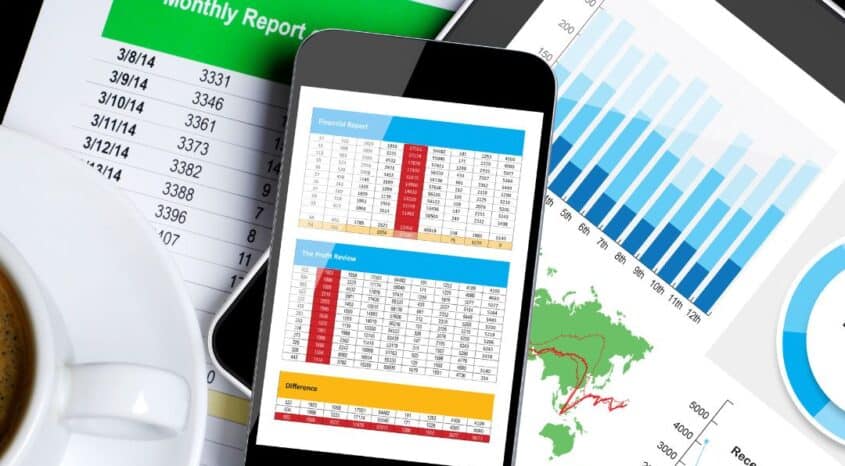Keeping track of the many moving parts of a growing e-commerce business might seem plausible at the start, but before long, you’ll be responsible for more manual tasks than you can count. This includes the physical elements of business such as packing and organizing stock, as well as the data-handling side; spending hours in spreadsheets and external systems which will gradually lose accuracy as you introduce more channels and orders.
Automation is the magical solution, and the most successful and resilient e-commerce retailers are using it to transform the way they run their high-growth businesses. Automating your processes means you can fulfil orders at a higher volume, sustain good customer service, organize your supply chains and boost marketing efforts – all without breaking a sweat. Consider using automation for the following processes as part of your smart e-commerce strategy for 2023…
1. Fulfil a higher volume of orders, fast
In this evolving e-commerce climate, customers want their deliveries yesterday, so speed is king when it comes to fulfilling orders. Automation can be weaved into your entire order flow to improve efficiency; from order routing to the nearest warehouse, to warehouse tasks such as barcode scanning, picking and packing; through to setting delivery rules such as choosing the right shipping partner for certain geographic limits.
When your operations are set up in this way, a spike in order volume or in order complexity (such as dropshipping or wholesale orders) doesn’t have to cause backlogs, grind things to a halt and keep your customers waiting. Demand can peak unexpectedly at any time – knowing you’ve set up your processes to withstand the heat is key to keeping your business on top.
2. Create purchase orders in a few clicks
Creating purchase orders manually can mean going blurry-eyed over reams of data, as you try to calculate what is selling well and which of your items need reordering soonest.
With intelligent inventory planning software, however, you can automatically receive stockout warnings ahead of time, as well as get replenishment recommendations based on your historic sales patterns – saving you and your staff hours of time. When you receive replenishment recommendations, you can easily create a new purchase order and send it straight to your suppliers in a couple of clicks.
3. Offer slick customer communications
Today’s e-commerce customers expect to be filled in on every stage of the order process, post-purchase – knowing that their order was received, that their item is on its way, where it is via order tracking, and how to leave a review or make a return once that product has arrived. Automating these email streams is an easily actioned task – and syncing your orders with email marketing apps such as Klaviyo or review sites like TrustPilot will pay off big time in customer satisfaction and brand loyalty.
Automated email comms can also serve as a key marketing tool, as you can inform customers of promotions, send reminders of cart abandonment, and offer suggestions for products related to their recent purchases. Boost customer service, too, by setting up automatic chatbot services – or being automatically notified when someone has left a negative review so you can quickly swoop in to rectify.
4. Auto-invoice your partners and suppliers
In the UK at least, 73% of SME decision makers admitted they’d rather lose money than chase late payments. Don’t lose valuable revenue by ignoring late-paid invoices – and sidestep the awkward money chat by using automation software to send invoices and reminders automatically.
By setting up conditions based on shipping and payment status, you can make sure you only invoice suppliers once orders are paid for and shipped. You can also add other channel-specific or product-specific conditions. One more task off the manual to-do list that ensures payments aren’t forgotten or delayed, and your cash flow stays healthy.
5. Personalize deliveries for different customer groups
Automation rules mean you can offer special treatment to targeted groups of customers – such as including a ‘welcome promotion’ card for first-time customers, a free in-package gift for every VIP customer, or custom recipe cards for those who ticked ‘vegetarian’ in their sign-up form, for example. This is the perfect scenario for which automation allows you to provide a memorable level of service to your customers, without adding complications and slowing down the processing time it takes for them to get their items.
6. Accurately predict future sales
Forecasting for future demand can be an extremely time-intensive task. There are multiple factors that could impact sales, from seasonality to market shifts and unexpected trends – and manually calculating these figures is not only error-prone, but can even go out of date in the time it’s taken to complete. Automated inventory forecasting takes this burden off the retailer – so you receive data-fuelled sales predictions alongside tons of granular inventory insights, without getting bogged down in hours of Excel work. This means your time is freed up to focus on other areas of the business, while your inventory is optimized to always hold the right amount of stock.
7. Receive consolidated, automatic updates on all systems and channels
Having all your operational processes in separate systems means spending hours of time consolidating data between them, cross-referencing between spreadsheets and wasting staff time. Automate this process with a central source of truth, such as Brightpearl, which automatically provides 360 degree, real-time insights across your entire business, without the need for manual checking or updating. This means time is spared and human error reduced, while any channels required for scaling the business can be easily ‘plugged in’ without disruption or fuss.
8. Boost your returns processes
Customers have big expectations for returns these days. Recent research by Klarna showed that a huge 84% of customers wouldn’t go back to a brand after a bad returns experience.
Automating returns makes it possible for your business to compete with the most successful retailers – as sorting incoming returns, redirecting them into inventory and refunding customers is a swift, streamlined process. With automation, you can process these returns quickly and conveniently, ensuring your customers are happy and brand loyalty is high, while still keeping costs low at your end.




